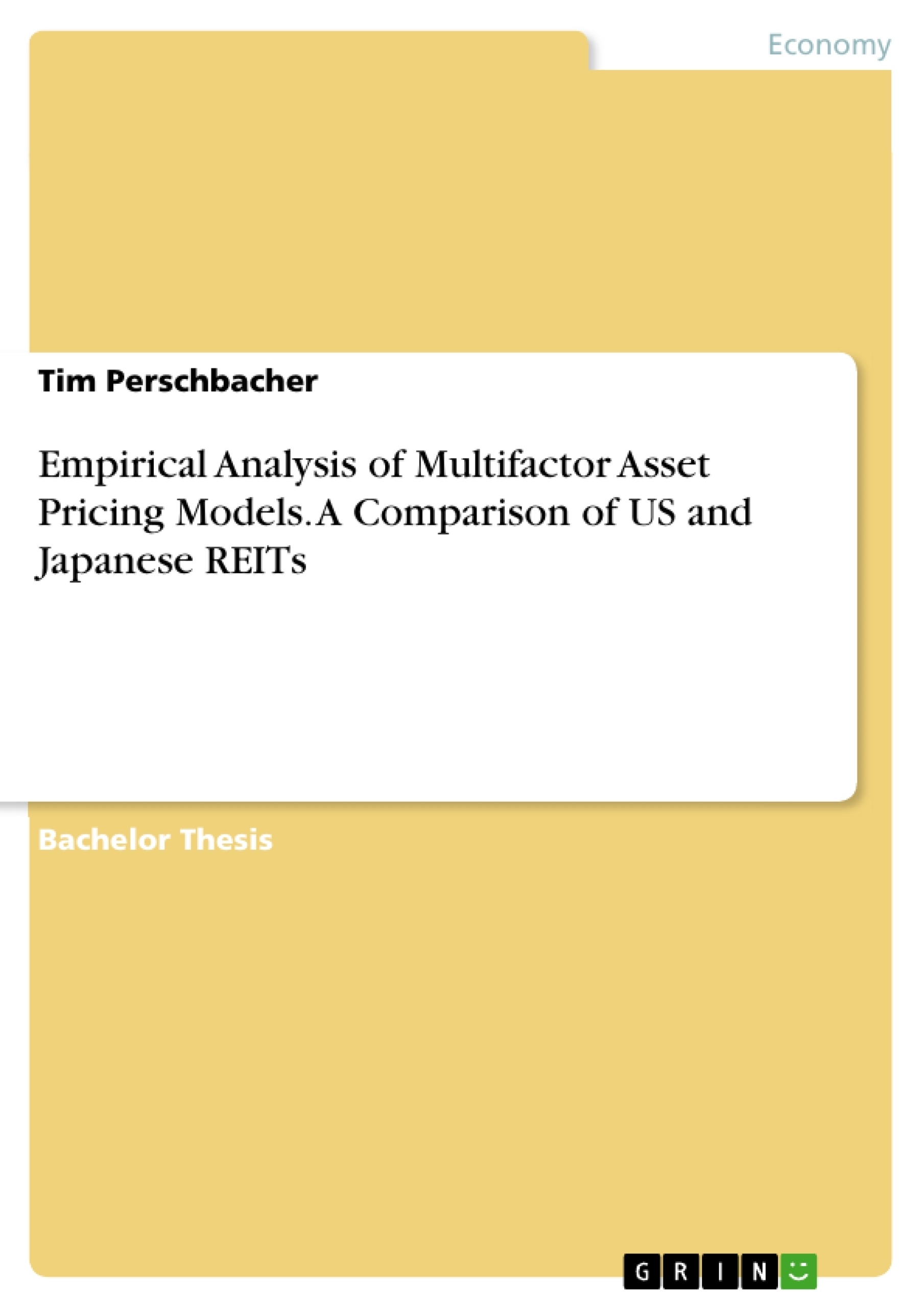This study is concerned with an empirical analysis of asset pricing. More specifically, this paper examines whether multifactor asset pricing models are able to explain variation in REIT returns in the US and Japan. In addition to traditional multifactor models, an Alternative Four-Factor Model (AFF) was developed considering net profit margin as an additional risk factor. Thence, this paper seeks to provide valuable information for investors and fund managers regarding their indirect real estate investment selection.
Using a sample period between July 1994 (US) / July 2011 (Japan) to December 2020, rigorous multiple-time-series regression is applied to calculate factor loadings for each risk factor and the corresponding alpha values of each model to evaluate their effectiveness in explaining variation and cross-section of REIT returns. Most studies on asset pricing models focus on size and value sorted portfolios as dependent variables. This paper broadens the approach with four other double sorted test portfolios to check the robustness of each single factor to explain return anomalies.
Results show that market premium and size premium represent risk factors for US-REITs, whereas market premium and value premium are suitable risk factors for Japanese-REITs. The momentum factor does not capture risk and is insignificant in both markets. The study shows low correlations between traditional and REIT specific as well as between US and Japanese risk factors. This suggests that firstly risk factors are country specific and secondly that they are asset specific.
Moreover, the Fama-French Three-Factor Model (FF3) clearly outperforms the CAPM, while the Carhart Four-Factor Model (CH4) marginally improves the explanatory power over the FF3. This is observed in both markets. Outcomes demonstrate that the Alternative Four-Factor Model (AAF) does not improve prediction power for returns of Japanese-REITs compared to the FF3 and CH4. On the contrary, results are ambiguous concerning US-REITs. While the additional risk factor, net profit margin, generates a negative return, the model is superior to the FF3 and CH4 in terms of explaining variation and cross-section of returns.
Inhaltsverzeichnis (Table of Contents)
- Introduction
- Rationale and Contributive Factors
- Objective and Aims
- Literature Review
- Real Estate Investment Trusts
- The Capital Asset Pricing Model
- Stock Return Anomalies
- Fama-French Three-Factor Model
- Carhart Four-Factor Model
- Evidence from the US and Japanese REIT-Market
- Gap in the Literature
- Empirical Framework
- The Alternative Factor Model
- Data Base
- Methodology
- Construction of the Risk Factors
- Construction of the Test Portfolios
- Regression Models and Evaluation Methods
- Empirical Analysis
- Descriptive Statistics
- Regression Results
- Variation in REIT Returns
- The Cross-Section of REIT Returns
Zielsetzung und Themenschwerpunkte (Objectives and Key Themes)
This thesis investigates the performance of real estate investment trusts (REITs) in the US and Japanese markets, analyzing their behavior in relation to various asset pricing models. The goal is to assess whether traditional multifactor models adequately explain REIT return variations and identify potential anomalies.
- Performance of REITs in the US and Japanese Markets
- Application of multifactor asset pricing models to REITs
- Evaluation of the effectiveness of existing models in explaining REIT returns
- Identification of potential return anomalies in the REIT market
- Contributions to the understanding of real estate investment in a global context
Zusammenfassung der Kapitel (Chapter Summaries)
The thesis begins with an introduction outlining the rationale and objectives of the study, emphasizing the importance of understanding REIT performance in both US and Japanese markets. Chapter 2 provides a comprehensive literature review, exploring key concepts like REITs, the Capital Asset Pricing Model, stock return anomalies, and multifactor models like the Fama-French and Carhart models. The chapter concludes by highlighting existing gaps in the literature pertaining to REITs and their performance in a global context.
Chapter 3 details the empirical framework, presenting the chosen alternative factor model, the data sources, and the methodology for data analysis. This includes the construction of risk factors, test portfolios, and regression models for evaluating REIT returns. Chapter 4 presents the results of the empirical analysis, starting with descriptive statistics and followed by regression results, focusing on both the variation and cross-section of REIT returns.
Schlüsselwörter (Keywords)
Real Estate Investment Trusts, Multifactor Asset Pricing Models, REIT Returns, US Market, Japanese Market, Fama-French Model, Carhart Model, Stock Return Anomalies, Empirical Analysis, Regression Models, Global Real Estate Investment.
- Quote paper
- Tim Perschbacher (Author), 2021, Empirical Analysis of Multifactor Asset Pricing Models. A Comparison of US and Japanese REITs, Munich, GRIN Verlag, https://www.grin.com/document/1370118



